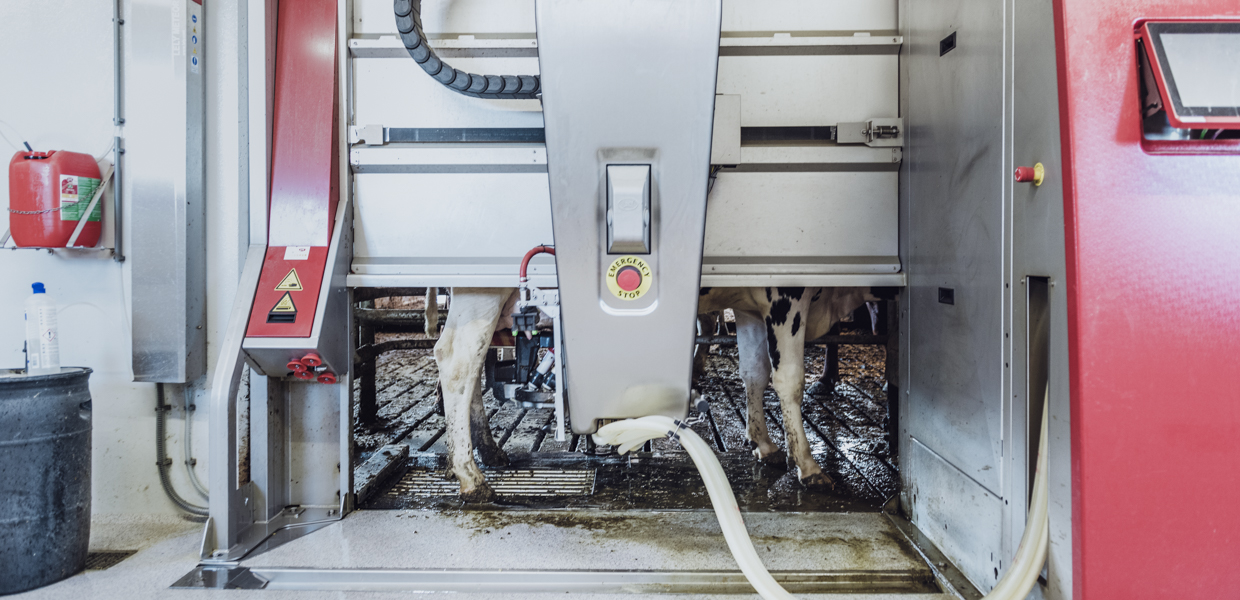The financing solution made it possible for Jan–Erik Hansson to order 20 milking robots. Today his cows manage the milking themselves. And when the cows can choose the result is more milk, healthier cattle, more calves and more time for other chores for one of Sweden’s largest milk producers.
There are more than 1500 cattle at Vallen farm. Even so it’s remarkably quiet. Noisiest is actually the shepherd dog Pepsi who full of energy runs back and forth to get attention. From the three large cattle houses there is once in a while a clonking sound when one of the 1100 milking cows goes in or out of a milking robot. Besides that, the only thing heard is a ruminating calm, and some extra activity just when the feeding robot has filled up the supplies in the feeding line. Every day the cows at Vallen eat approximately 100 tons of grass. The cows are free to walk outdoors but most of them are content with staying inside, close to the food, the back scratcher and the milking robots, where a visit is rewarded with some extra tasty fodder. That makes the traffic in and out of the robots peaceful and quite regular. The cows at Vallen provide a total average of 25 kilos of milk per second. That equals 1500 kilos per hour that’s filled into the two milk tanks standing outside the cattle houses.
“The present average is 34-36 tons of milk every 24 hours, but in a couple of months when the last two robots are installed we will get more than 40 tons”, says Jan-Erik Hansson who with an annual delivery of 13 million kilos milk is the dairy company Arla’s single largest Swedish milk supplier. ”Most of the milk goes to Kallhäll in Stockholm and becomes consumer milk and cream.”
